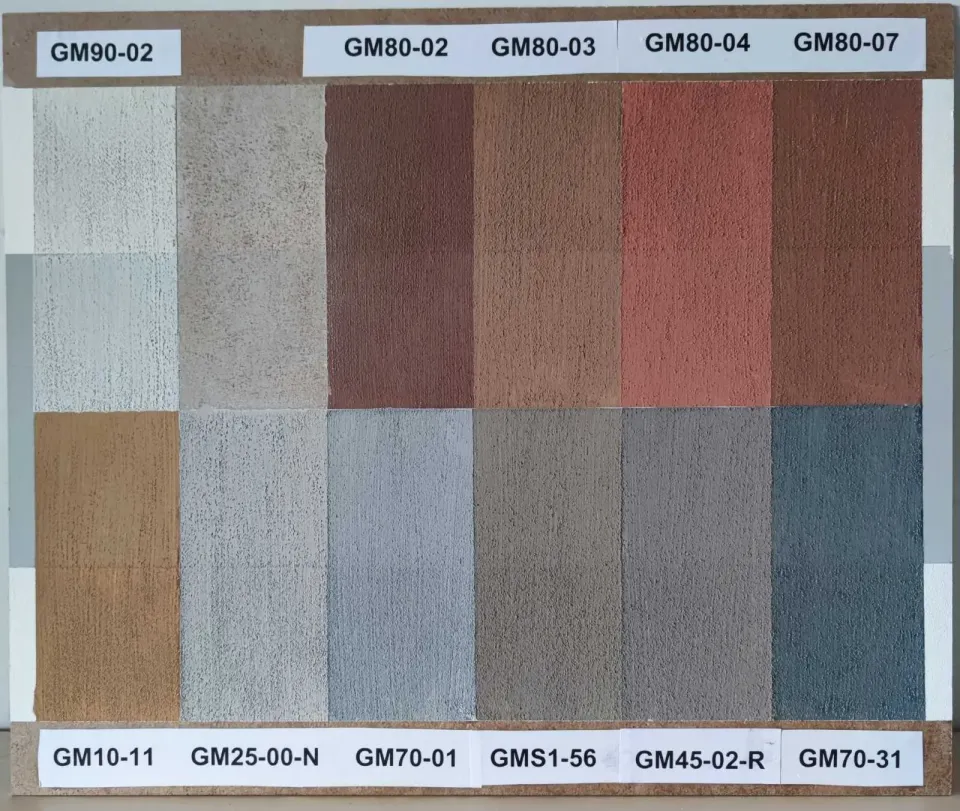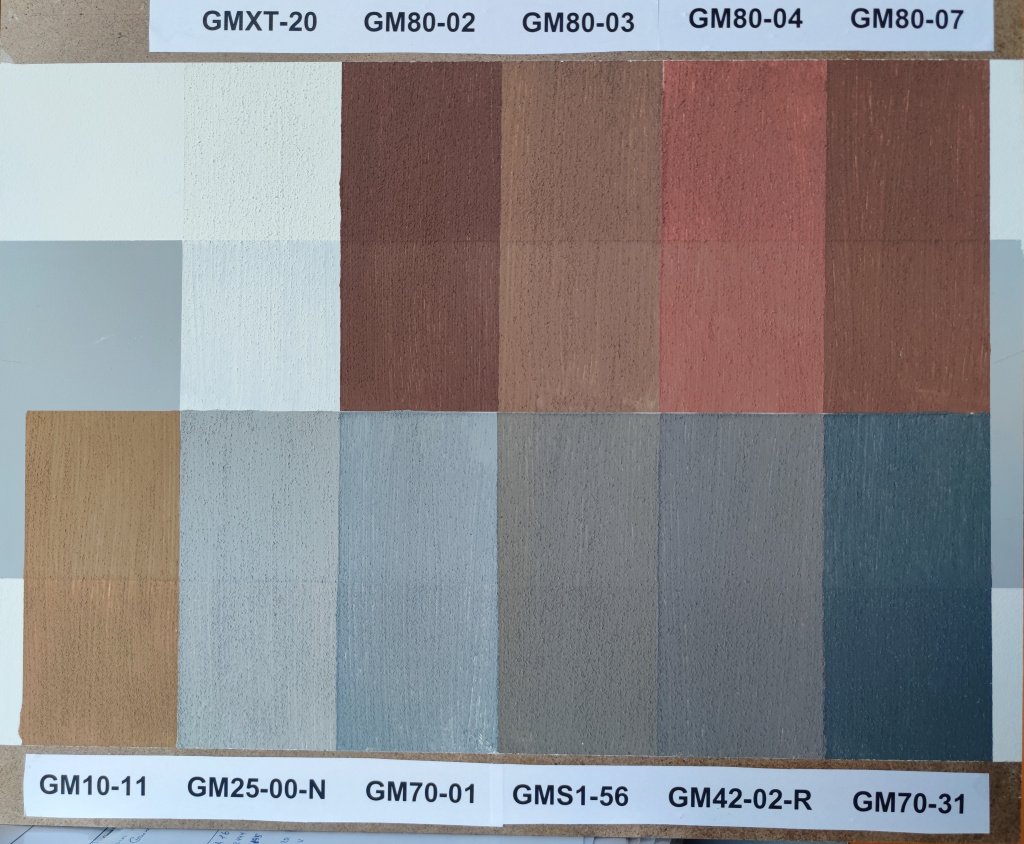
The need to tint quartz adhesive primer
The need to tint the adhesive quartz primer when preparing the surface for applying decorative mosaic plaster When preparing the surface before applying decorative mosaic plaster, the following must be done::
- 1. Fresh cement (and lime) surfaces should be left to cure for at least one month.
- 2. The substrate should be even, dry and strong.
- 3. “Efflorescence”, peeling, wallpaper, various kinds of contamination, weak and crumbling areas, as well as substances that reduce the adhesion of the mosaic plaster to the substrate (dust, fats, oils, etc.) should be carefully removed.
- 4. Areas affected by mold or moss should be cleaned mechanically and treated with an anti-mold agent, for example: Biotol, Antiskimmel.
- 5. Treat metal parts with anti-corrosion primer.
- 6. Fill any unevenness with putty.
- 7. Treat the surface with a penetrating primer. For example: Aquastop Facade - for outdoor work, Aquastop Expert or Aquastop Professional - for interior work.
8. The surface must be treated with an adhesive primer with quartz filler. For example: silicone primer Aura Dekor Silikon Grund or Condor Silikon Putzgrund - for exterior work; acrylic primer Aura Dekor Grund or Condor Dekogrund 16 - for interior work. The adhesive primer with quartz filler must be tinted to the main color of the filler (colored stone) of the mosaic plaster that will be applied later. Tinting the primer with quartz filler is necessary in order to create a colored coating layer on the surface (base) and thereby achieve the subsequent creation of a uniform color optical effect on the finished surface.
The photos show examples of the correct and incorrect choice of tinted primer with quartz filler, as well as the results of its use.

Fig. 1. The color of the adhesive primer was incorrectly selected. Mosaic plaster with brown and black filler was applied to a white adhesive quartz primer. In areas where the mosaic filler was applied loosely, with gaps, gaps of the white substrate are visible.

Fig. 2. The color of the adhesive primer was incorrectly selected. Mosaic plaster with red filler was applied to a white adhesive quartz primer. In areas where the mosaic filler was applied loosely, with gaps, gaps of the white substrate are visible.

Fig. 3. Mosaic plaster with red filler is applied to an adhesive quartz primer of two colors: the left side is red, and the right side is white. On the right side, in areas where the mosaic filler was applied loosely, with gaps, gaps of the white substrate are visible. Also, color inhomogeneities are noticeable over the entire surface. This is an example of incorrect selection of the color of the adhesive primer. On the left side, the entire surface looks uniform, without any color spots. Even in those places where the mosaic filler was applied loosely, the areas not filled with mosaic are not noticeable, because they merge with the general red background of the surface. This is an example of correct selection of the color of the adhesive primer.

Fig. 4. Mosaic plaster with black filler is applied to an adhesive quartz primer of 2 colors: 2/3 of the left part is dark gray, and 1/3 of the right part is white.
On the right part, in areas where the mosaic filler was applied loosely, with gaps, gaps in the white substrate are visible. This is an example of incorrect selection of the color of the adhesive primer.
On the left side, the entire surface looks uniform. Even in those places where the mosaic filler was applied loosely, the dark gray areas of the substrate not filled with mosaic are not visible, because they merge with the general dark background of the surface. This is an example of correct selection of the color of the adhesive primer.
Thus, in the examples it can be seen that with the help of tinted adhesive quartz primer small errors in the application of plaster of the “mosaic” type can be leveled. In this case, there is no need to apply a thick layer of “mosaic” plaster (to guarantee “covering” the surface), the application of the material with the recommended consumption for the recommended layer thickness by 1.5 the size of the “grain” (filler) is ensured and the cost of the finishing material per 1 m2 is reduced.
Conclusion:
The use of an adhesive primer with a correctly selected color allows the plasterer-painter to achieve an economical, fast and high-quality result when applying decorative mosaic plaster..
Recommended colors for tinting the adhesive primer before applying mosaic Aura Luxpro Mosaik and Condor Hausproff Mozaik Putz indicated in the table.
| Color name (formula) of adhesion primer | Mosaic plaster color name | Mosaic plaster color name |
| «зерно» 1,0 мм | «зерно» 1,5 мм
| |
| GMS1-56 | S112, S160, S164, S166 | - |
| GMXT-20 | S106, S120, S121, S122, S123, S125, S126, S127, S128, S130, S135, S140, S158 | B206, B220, B221, B222, B223, B224, B225, B227, B230, B235, B240, B260, B261 |
| GM10-11 | S107 | B207, B226, B231, B234 |
| GM25-00-N | S111, S159, S161, S162, S163, S165 | B210, B265, B266 |
| GM45-02-R | - | B211, B262, B263, B264, B267, B268 |
| GM70-01 | S139, S145, S157 | - |
| GM70-31 | S101, S105, S144, S149, S154, S167 | B201, B205, B244, B249, B254, B256, B259, B269 |
| GM80-02 | S136, S138, S141 | B228, B237, B243, B255 |
| GM80-03 | S103, S108, S131, S132, S137, S142, S147, S152 | B203, B208, B236, B238, B239, B241 |
| GM80-04 | S104, S143, S148, S156 | B204, B233, B247, B253 |
| GM80-07 | S102, S109, S133, S146, S150, S151, S153, S155 | B202, B209, B229, B232, B242, B245, B246, B248, B250, B251, B252, B257, B258 |
The colors of the tinting adhesive primer with quartz filler are shown in the photo.








